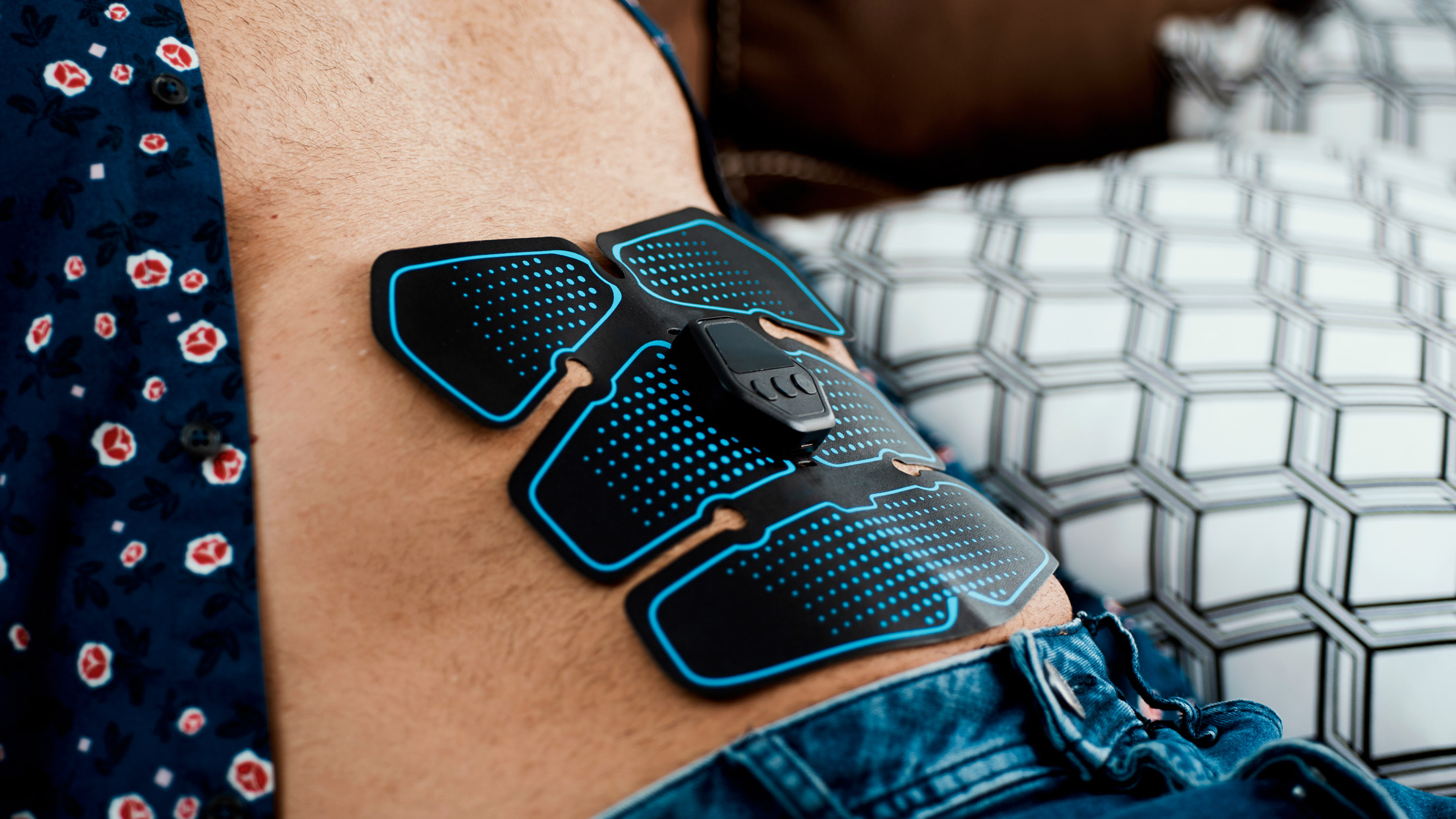Science says electric muscle stimulation belts can work, but they won’t give you abs
Electric muscle stimulation abs belts can improve core strength

Six-pack abs aren't the be-all and end-all of fitness, and the vast majority of very healthy, fit people don't walk around looking like a fitness model. However, if you really want six-pack abs for some reason, the internet is full of advice, tips, and hacks to get there faster. Some of it is useful: for example, you can't "burn belly fat" in time for summer, but you can lose fat overall by using one of the best fitness trackers or best running watches to monitor your calorie burn and eating less calories than you burn each day.
You can improve core strength (and get visible abs if your body fat is low enough) by performing moves such as planks and hanging leg raises, which don't compromise your spine health in the same way sit-ups do. Again, solid advice, even if core strength doesn't always equate to visible abs.
However, there is also some really dumb advice out there, designed to part you from your hard-earned cash. Spurious claims on equipment used to vibrate your fat away, miracle fat-burning supplements full of caffeine or green tea or cider vinegar, or outrageous (and occasionally dangerous) exercise programs reportedly used by superhero actors to get in shape in a matter of weeks.
One piece of fitness technology that's often soundly mocked, but also seems to sell like hotcakes, is electric muscle stimulation. Home electric muscle stimulation technology comes in many forms, usually a belt that is strapped around the waist to deliver shocks to your midsection, but you can also get pads to adhere and deliver jolts of electricity to any muscle group. Perhaps the most famous of these is the SIXPAD system, once heavily advertised by footballing legend Cristiano Ronaldo.
The price for SIXPAD units and other stimulator belts have dropped these days, and they're no longer the $400 / £350 / AU$550 investment they once were. You can pick up belts and arm straps for around a fifth of that price on Amazon. Ronaldo's advertising campaign heavily implied, very persuasively, that he uses the SIXPAD in place of normal training, although all documentation mentions they technology is to be used alongside regular exercise and a balanced diet. It looks, and sounds, far too good to be true.
However, it turns out there are benefits to the practice of electric muscle stimulation technology, according to peer-reviewed research papers. One study, published in the Journal of Sports Rehabilitation, looked at the strength of participants beforehand when asked to lower their body while standing on one leg, like a pistol squat. Half the group did eight weeks of electric muscle stimulation (EMS) training, while the other half did traditional strength work.
It was found there was significant improvement in both groups, and the EMS trained group got stronger. However, greater improvements were seen in the traditional strength training cohort.
Sign up for breaking news, reviews, opinion, top tech deals, and more.
Another study, published in the Journal of Sports Science and Medicine, found participants who did EMS training thought their midsections were "more toned" and "firm" and their posture was found to improve. However, there was no change in the participants' BMI or body weight as a result of an EMS training program.
Therein lies the rub: if you're already an active person and you're looking for additional strength support, 20 minutes with an EMS device might actually improve muscular strength and endurance. However, it's not going to make you look like Ronaldo, and if you're sat on the couch eating junk food, wearing an EMS belt isn't going to slim you down a jot.
The fitness industry is unfortunately full of scams, and occasionally it preys on our feelings of inadequacy and laziness. Everyone wants to be able to sit on the sofa and wear something that will make them look like a superstar, but unless you're already putting in the work, an automatic six-pack machine is sadly too good to be true. You need to use the right tool for the job, which is why I've ditched my Apple Watch in the gym and just use my Notes app instead.

Matt is TechRadar's expert on all things fitness, wellness and wearable tech.
A former staffer at Men's Health, he holds a Master's Degree in journalism from Cardiff and has written for brands like Runner's World, Women's Health, Men's Fitness, LiveScience and Fit&Well on everything fitness tech, exercise, nutrition and mental wellbeing.
Matt's a keen runner, ex-kickboxer, not averse to the odd yoga flow, and insists everyone should stretch every morning. When he’s not training or writing about health and fitness, he can be found reading doorstop-thick fantasy books with lots of fictional maps in them.